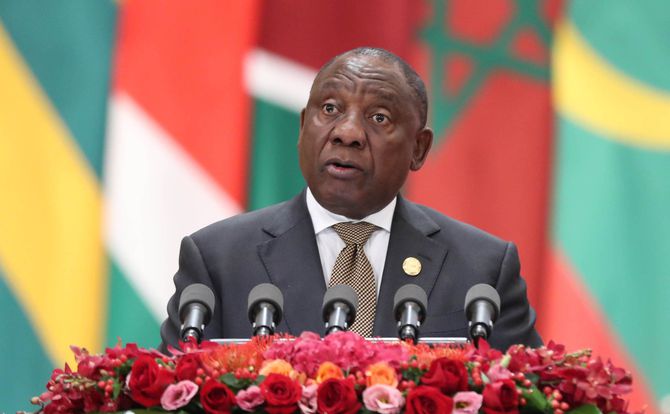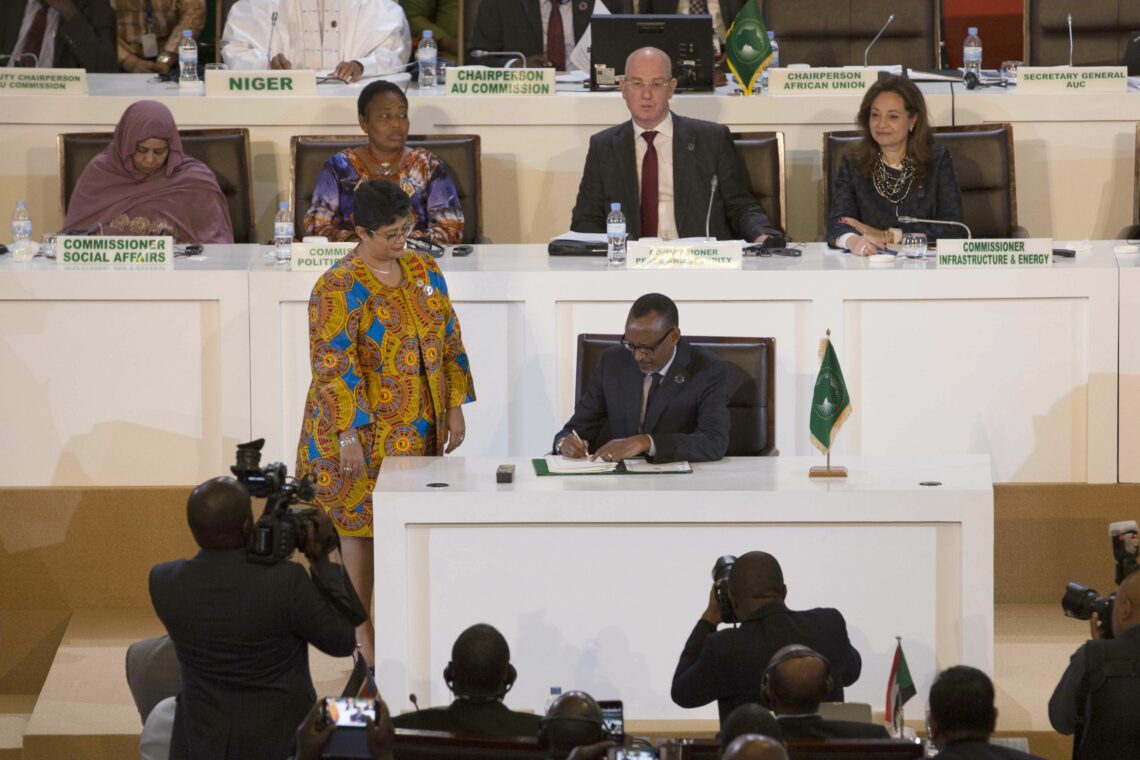Dim prospects for developing countries
Developing countries are facing some favorable global conditions, with cheap financing and rising commodity prices. But three roadblocks will prevent improved growth in developing economies: government involvement in the market, an outsize bureaucracy, and an undereducated labor force.

In a nutshell
- Despite global conditions, developing countries are seeing poor growth
- Big government and undereducated workers are roadblocks
- A new trade bloc and Chinese investment will not drive growth without other reforms
In 2018, many developing countries performed reasonably well in terms of growth, and some countries did very well. The gross domestic product (GDP) of Bangladesh, Cambodia, Cote d’Ivoire, Eritrea, Guinea, Rwanda and Vietnam all grew at an annual rate above 7 percent. Does this mean that new opportunities for productive investments are opening up in formerly neglected parts of the world?
From a historical perspective, developing countries are facing some favorable conditions. Oil prices have stabilized, gold prices are on the rise, financing is easy and cheap, trade barriers with the rest of the world are slowly being eroded, and foreign investors are looking for new opportunities to relocate production and start ventures.
Yet recent data released from South Africa, the continent’s most-developed economy, are far from encouraging. During the first quarter of 2019, GDP fell significantly, and unemployment remained at about 27 percent. Only three sectors expanded their activities: government, finance and personal services. This is a phenomenon seen in many other African countries, from Mozambique to Morocco, and it does not bode well.
Government as producer
The perilous condition of South Africa epitomizes what prevents the continent and other developing regions from growing: an uneducated population, bloated government, and policies that seek political consensus rather than investment and entrepreneurship.
What is wrong? Have these countries reached the bottom? And is this the right time for Western investors to take a chance and put Africa and underdeveloped countries elsewhere back on their radar?
Recent data released from South Africa, the continent’s most-developed economy, are far from encouraging.
Investors should look primarily at three criteria. One is the role of government, especially as a producer; unsurprisingly, it is a bad one. For example, the South African case has shown that state ownership and management of the power grid is a recipe for disaster. Certainly, investors often prefer government ownership, because it ensures relatively low prices (the taxpayer or an increase in public debt covers the difference) and makes it easier for large companies to negotiate comprehensive deals with the local authorities. Ad hoc tax arrangements are frequently part of these deals.
However, the downside is that government ownership increases the probability of major and recurrent outages and poor service overall. This is indeed what happened in South Africa’s power industry in early 2019. Governments can also renege on their previous commitments, especially when new ruling elites come to power. Taking governments to court for breach of contract is usually a futile and expensive exercise.
Structural problems
A second and rather delicate criterion is the size of the bureaucracy. For example, in many African countries the share of government expenditure is about 35 percent of GDP (the figures for the United States and the European Union are 38 percent and 46 percent, respectively). However, according to the World Bank, the share of the public budget devoted to paying civil servants in Africa is extremely high: it ranges between 30 and 50 percent (the range for Europe is 5-15 percent).
Given the prevailing wage rate for public employees in Africa, these numbers mean two things. First, an overblown civil service drives an ever-increasing amount of regulation and red tape. Moreover, large, underpaid bureaucracies, endowed with considerable discretionary powers and little responsibility, provide an ideal breeding ground for corruption. Corruption, in turn, is both an additional tax on production and a source of uncertainty. In most countries, it also means that the judiciary is inefficient and unreliable.

A third and final concern is education. The good news is that Africa and much of the developing world is full of young people. Many of them are ambitious and eager to improve their condition. The problem, however, is that this large reservoir of labor is currently undereducated.
According to the Borgen Project, an anti-poverty advocacy group, less than 40 percent of the population in sub-Saharan Africa aged 15-17 are in school, and only about 50 percent of their teachers have some kind of training. College enrollment is about 8 percent. In other words, in many countries, the labor force is relatively unskilled and often incapable of operating modern production technologies. (The only exception is perhaps the construction industry, which does not require the same skills.)
No way out
The outsize role of governments in the economy, the presence of large bureaucracies and unreliable judicial systems, and the failure to educate both students and teachers all contribute to a rather grim picture for most developing countries, and Africa in particular.
Three strategies to improve the situation are now being proposed. The first is to form a large trade bloc, the African Continental Free Trade Area (AfCFTA). Launched in July 2019 after four years of negotiations, the AfCFTA includes 55 countries, 1.3 billion people, and more than $3 trillion in GDP. The main idea is to enhance growth by boosting free trade within the continent.
Put bluntly, it will be a failure. To begin with, this agreement does not mean that goods and services can now travel freely across the AfCFTA bloc; rather, it means that all the countries involved have committed themselves to a 90 percent reduction of tariffs. Many details are unknown, and the future of the existing nontariff regimes also remains opaque. One fears that after the lights go off, their commitments will be shelved and barriers to trade will remain in place.
Moreover, trade promotes growth because it is the handmaiden of relentless competitive pressures. Unless African governments dismantle the current regulatory corsets, scrap their existing bilateral and multilateral agreements, and refrain from interfering with markets, competitive pressures will be ineffective. If competition is stifled, investments stall, technological transfers remain modest, dependence on raw materials remains critical, and growth suffers.
Trade promotes growth because it is the handmaiden of relentless competitive pressures.
The second approach had been popular until recently, but it is now showing some cracks. Until about 10 years ago, and especially after the fall of the Soviet Union, Africa and a large portion of the Third World looked to the West for help. For a variety of reasons, this assistance was doled out through an eyedropper. To make matters worse, it was frequently of the wrong kind, and delivered to the wrong recipients.
Then came China, which promised to spur growth across the continent by building infrastructure, buying raw materials, and selling manufactured goods to a growing list of countries that came under China’s economic influence. Ultimately, as Beijing moved its production upscale, some of these developing nations could hope to attract Chinese manufacturing investments of their own. It sounded easy and cheap, almost a free ride.
Regrettably, none of this appears to be true. Chinese loans are expensive and debt servicing has begun taking a toll; new infrastructure alone is not enough to trigger growth; and ambitious and talented entrepreneurs from elsewhere in Asia are already challenging China in several industries. Furthermore, the game of the future does not consist in finding cheap labor, but in scouting for robot-friendly environments. Education and institutional reliability are far more important than being the cheap-labor partner of a powerful economic bloc.
Back to basics
The third scenario consists of going back to basics and drawing some lessons from China and the West. Free market-oriented reforms pay dividends, whereas regulation kills entrepreneurship and growth. In most cases, public expenditure breeds large public indebtedness. (In some countries with strong fundamentals – like Japan, the U.S. or Germany – monetary tricks and public-finance mismanagement may not be so important, but in fragile economies they lead to devastating outcomes, regardless of any temporary growth spurts they produce.)
This suggests that Africa and the developing world may have already missed their chance. It will be decades before those economies can develop a well-educated labor force, carry out necessary administrative and judicial reforms, and earn credibility on capital markets.
Generalizations can be misleading, and there will surely be a few exceptions (one is probably Vietnam). The new industrial revolution driven by artificial intelligence and robotics will offer plenty of opportunities that only a few countries will be in a position to exploit.
In this scenario, major world players – the U.S., China and possibly Russia – will continue to regard most of today’s Third World as a reservoir for precious raw materials and little else. Investors looking for profitable opportunities in the manufacturing sector will probably look elsewhere, with good reason.







